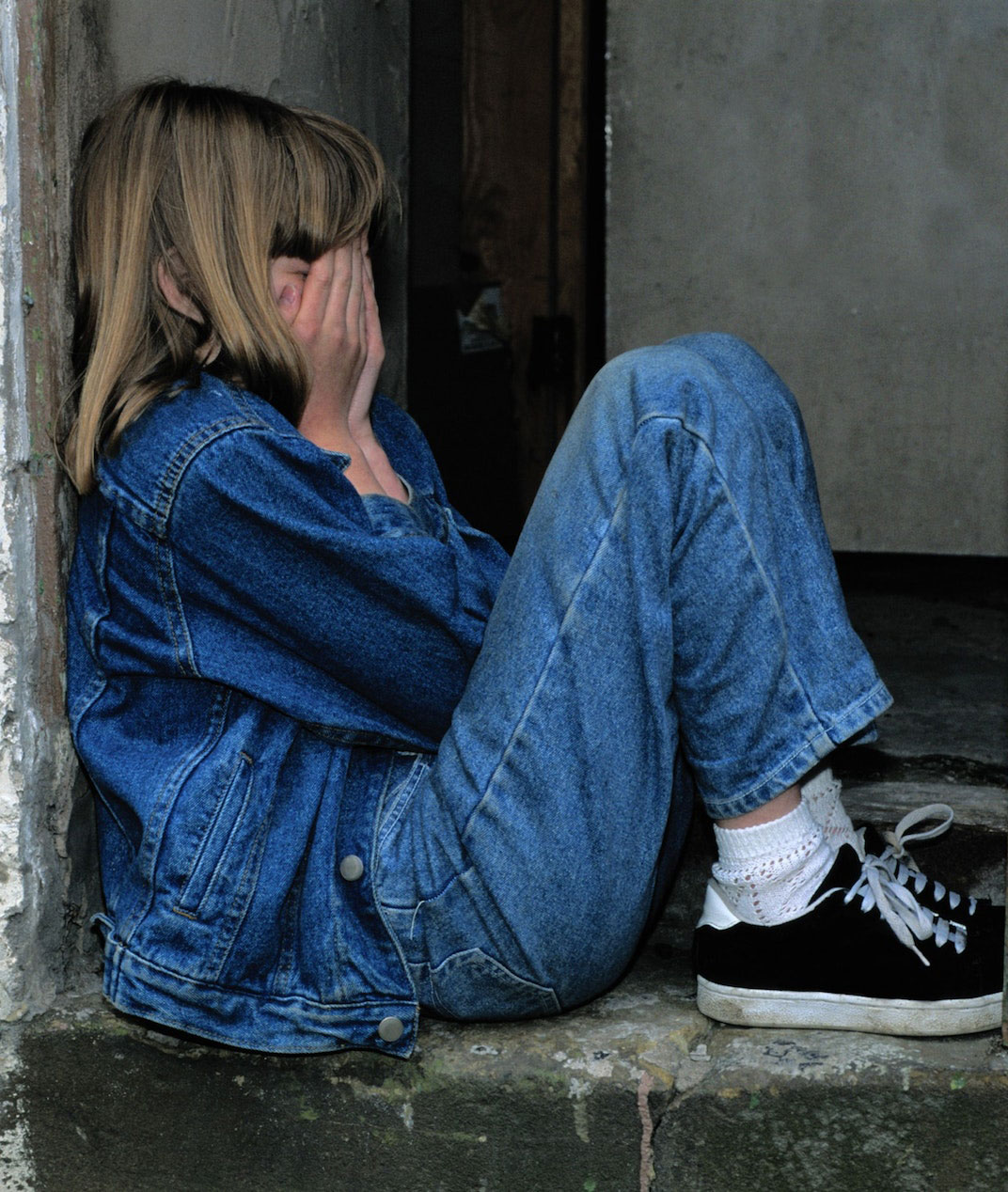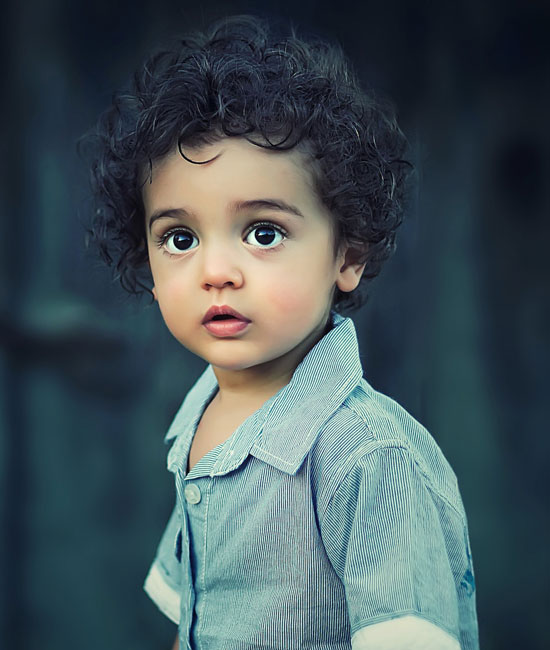Each child is unique in his /her talents and potential. Some children acquire it with ease while some require a nudge in the right direction.An individual’s brain is in the developmental stage from conception to adolescence , which is influenced by several factors such as childhood experiences and the environment in which they grow in. Well rounded growth of a child can be promoted with apt and timely modification of these factors, and intervention in hurdles like academic and social difficulties.Insight offers a multi-disciplinary approach in designing holistic therapy for each child in a child friendly environment.
The adolescent phase brings forth many types of stress in the lives of students as they try to balance a demanding curriculum and peer pressure.Their perception and handling of stress is important in developing healthy coping skills and also in preventing maladaptive mechanisms such as alcohol consumption, isolation, anxiety, depression etc.Insight provides various services in the form of psychotherapies including occupational therapy and group sessions to help address the different psychological problems being faced by our children and adolescent age group .


Autism Spectrum Disorder
ASD is a spectrum of disorders related to development of the brain that impacts how a child perceives and socializes with others, resulting in difficulties in social interaction and communication. Limited and repetitive patterns of behavior may also be a part of this wide range of symptoms.
Interaction and emotion:
- Tendency to avoid interaction
- Poor attention
- Limited eye contact with others
- Repetitive statements, play, or behaviours
- Failure to develop pretend play
- Intense fears about ordinary objects, activities or events
Language/communication
- Problems following simple directions
- Echolalia, or repeating what has just been said
- Difficulty making needs and desires known by gestures, words or play
Other changes
- Difficulty dealing with changes in environment
- Avoidance of hugs or light touch
- Does not point to show you things
- Poor coordination
- “Self-stimulatory” behaviours: spinning, hand flapping, head banging
- CARS
- M-CHAT
- ABLLS
- DST
- VSMS
- VABS
- Social skills training
- Behavioural therapy
- Attention enhancement training
- Intervention based on ABLLS
- Applied Behavior Analysis
- Sensory enrichment therapy
- Pharmacotherapy
MYTH: “Children with ASD cannot form loving relationships with the same degree of warmth and intimacy as others.”
FACT: With the help of a comprehensive, affective, relationship-based approach children can learn to enjoy closeness, warmth and intimacy, and can love others.
MYTH: Autism is a mental illness.
FACT: ASD is an umbrella term for a group of developmental disorders that are neurological in origin; it is thus, not a mental illness.
MYTH: Only boys are affected with autism.
FACT: Autism is seen both in girls and boys, however, studies show that autism is more prevalent amongst boys.
MYTH: There is no treatment for autism.
FACT: it is true that autism cannot be cured but there are many treatment options that can help children cope with autism.
MYTH: Children with autism will never learn to speak.
FACT: Children with autism can speak but they may have problems because of delayed language development. With effective early intervention, it is possible for them to develop their verbal skills.
MYTH: Symptoms of autism are similar in all children.
FACT: Autism is known as a spectrum disorder because its symptoms and characteristics appear in a variety of combinations that affect different people in different ways. The challenges faced by children with autism are unique.
MYTH: Autism is caused by poor parenting.
FACT: Although the exact causes of autism have not been determined till date, it has now been clearly established that autism is not caused by flaws in parenting

Intellectual Disability
A neurodevelopmental disorder wherein lies significant impairment in intellectual functioning that is, learning, problem solving,etc . It also affects adaptability towards stressors/ situations in daily living .Depending on degree of severity intellectual disability can be further classified as mild, moderate, severe.
- Difficulty in learning and in managing emotions and behavior
- Lack of communication skills
- Disruptive and aggressive behaviors like truancy and bullying
- Easily exploited or victimized/ bullied
- Getting involved in problematic groups or gangs.
- BKT
- WISC·
- MISIC
- Seguin Form Board Test
- Developmental screening test
- VSMS
- Behavior therapy
- Behavior modification
- Cognitive retraining
- ADL skills training
- pharmacotherapy
MYTH: Students with intellectual disabilities cannot learn to read.
FACT: Many students with intellectual disabilities are able to learn how to read, but may take longer. They require specific interventions, or follow different pathways, but reading skills are attainable.
MYTH: Student with intellectual disabilities cannot be successful in the general education setting.
FACT: Not only can students with ID make academic gains within the general education setting, there is evidence that social skills development is better-supported while being educated alongside non-disabled peers; however, in order for students to be successful, teachers and administrators must have knowledge and skills to support an inclusive educational program.
Myth: Faith healers can cure intellectual disability.
Fact: This is completely false. Faith healers mislead parents into believing that they can cure intellectual disability. There is no proof or valid research-based evidence that supports this claim.
Myth: Bad deeds/karma of parents from a previous life can cause intellectual disability.
Fact: This is entirely false. Beliefs like these only add to the already increased burden on the parents. Intellectual disability is a medical condition, and parents and caregivers need support from the community. People with intellectual disability perform very well with sufficient support and encouragement from their family and the community.

Attention Deficit Hyperactivity Disorder
ADHD is one of the most common neurodevelopmental disorders of childhood. It is usually first diagnosed in childhood and often lasts into adulthood. Children with ADHD may have trouble paying attention, controlling impulsive behaviors (may act without thinking about what the result will be), or be overly active. The symptoms usually begin to appear at age 3 or 4 and may steadily worsen.
Inattention:
- Being easily distractible and skipping from one activity to another.
- Having trouble listening to and following directions.
- Being disorganized and forgetful of their daily activities.
- They seem not to listen when spoken to directly
Hyperactivity/ Impulsivity:
- Fidgets or squirms excessively
- Leaves seat when inappropriate
- Runs about/climbs extensively when inappropriate
- Has difficulty playing quietly
- Often “on the go” or “driven by a motor”
- Talks excessively
- Blurts out answers before question is finished
- Cannot await turn
- VADPRS
- CONNERS
- CBCL
- BKT
- WISC·
- MISIC
- Attention enhancement training
- Behavioral therapy
- Social skills training
- Pharmacotherapy
Myth: There is no such medical condition as ADHD.
Fact: ADHD is a medical disorder, not a condition of the child’s will. A child with ADHD does not choose to misbehave.
Myth: ADHD is caused by bad parenting. All the child needs is good discipline.
Fact: ADHD is not caused by bad parenting. But parenting techniques can often improve some symptoms and make others worse.
Myth: ADHD is a life sentence.
Fact: Although ADHD symptoms usually continue into adulthood, the person learns ways to cope with the symptoms. People with ADHD have plenty of energy, are creative, and can often accomplish more than people who do not have the condition.
Myth: Having ADHD means the person is lazy or dumb.
Fact: ADHD has nothing to do with a person’s intellectual ability. Some highly intelligent people have ADHD.
Myth: The diagnosis of ADHD is confirmed if certain medicines (psychostimulants) have a positive effect on what seem to be symptoms of ADHD.
Fact: Children without ADHD respond to psychostimulants similarly to children with ADHD. A trial of medicine is not used to diagnose the condition.
Myth: Medicine for ADHD will make a person seem drugged.
Fact: Properly adjusted medicine for ADHD sharpens a person’s focus and increases his or her ability to control behavior.
Myth: Psychostimulants are no longer useful after puberty.
Fact: Teens and adults with ADHD continue to benefit from medical treatment.
Myth: Children with ADHD are learning to use the condition as an excuse for their behavior.
Fact: ADHD is a disability not an excuse. Children with ADHD have to learn ways to deal with their symptoms (inattention, impulsivity, and hyperactivity) that cause them to have difficulties in life.
Myth: Children outgrow ADHD.
Fact: About 70 out of 100 children with ADHD continue to have symptoms during their teen years and about 50 out of 100 have symptoms into adulthood.

Learning Disability
A learning disability is a neurological condition which affects the brain's ability to send, receive, and process information. A child with a learning disability may have difficulties in reading, writing, speaking, listening, understanding mathematical concepts, and with general comprehension. Learning disabilities include a group of disorders such as dyslexia (affects language and reading), dyspraxia (affects fine or gross motor), dyscalculia (affects mathematical skills) and dysgraphia (affects ability to write). Each type of disorder may coexist with another.
- Difficulty with Spelling, Reading and Math
- Limited attention span
- Hyperactivity
- Deficits in social skills
- Poor motor abilities
- Psychological processing deficits
- Poor memory
- Difficulty in following rules and directions
- Difficulty in adjusting to new surroundings
- BKT
- WISC·
- MISIC
- NIMHANS SLD
- Remedial training
- Behavioral therapy
- Individualized educational program
- Attention enhancement training
Myth: All learning disabilities (LD) are the same.
Fact: Learning disabilities is a complicated condition which includes a group of disorders such as dyslexia, dysgraphia, dyscalculia, and dyspraxia. The severity of the disorder and its symptoms may vary from person to person.
Myth: Children with learning disabilities have low IQ.
Fact: Learning disability is a neurological condition, and hence is not a sign of low intelligence. In fact, children with learning disabilities have average and above-average intelligence.
Myth: All learning disabilities are cured by adulthood.
Fact: With a few exceptions, learning disability cannot be cured. This does not mean that such children will not be successful. With the right support, children can learn to work around difficulties and use their strengths to achieve their goals in life.
Myth: Children with learning disabilities are lazy.
Fact: Children with learning disabilities work harder but their efforts do not bring out the results required. Due to this reason, children may become discouraged and appear to be lazy.
Myth: Learning disabilities and ADHD often co-exist.
Fact: It is true that nearly one-third of children with learning disabilities also have ADHD.

Enuresis
Enuresis is described as the loss of bladder control. It is basically repeated voiding of urine into the child’s bed or clothes. It maybe involuntary or intentional. It is normal to not have full bladder control in children under the age of five, however even after attaining age of 5 if this issue persists, it may be time that you seek professional support.
- Behavioral therapy
- CBT
- PMT
- Pharmacotherapy

Encopresis Disorders
It is a condition in which a child passes feces in inappropriate places regularly. The child resists bowel movements, causing impacted stool to collect in the lower intestine leading to leakage (soiling). More than 80% of children with encopresis have experienced constipation or painful defecation in the past. Encopresis may also occur due to emotional reasons which need detailed exploration. Soiling episodes usually occur during the day, while the child is awake and active.
- Behavioral therapy
- CBT
- PMT
- Pharmacotherapy

Conduct Disorder
Conduct disorder is a serious behavioral and emotional disorder in which a child may display a regular pattern of disruptive and violent behavior and have problems following rules. However, the behavior is considered to be a conduct disorder when it is long-lasting and when it violates the rights of others, goes against accepted norms of behavior and disrupts the child's or family's everyday life.
Aggressive behaviour: These are behaviours that threaten or cause physical harm and may include fighting, bullying, being cruel to others or animals, using weapons, and forcing another into sexual activity.
Destructive behaviour: This involves intentional destruction of property such as fire-setting and vandalism.
Deceitful behaviour: This may include repeated lying, shoplifting, or breaking into homes or cars in order to steal.
Violation of rules: This involves going against accepted rules of society or engaging in behaviour that is not appropriate for the person’s age. This may include running away, skipping school, playing pranks, or being sexually active at a very young age.
Mood and emotional issues:In addition, Many children with conduct disorder are irritable, have low self-esteem, and tend to throw frequent temper tantrums. Some may abuse drugs and alcohol. Children with conduct disorder often are unable to appreciate how their behaviour can hurt others and generally have little guilt or remorse about hurting others.
Social issues: Children with conduct disorder are also at risk for school-related problems, such as failing or dropping out, substance abuse, legal problems, injuries to self or others, sexually transmitted diseases, and suicide.
- CBCL
- VADPRS
- BKT
- WISC·
- MISIC
- Projective tests – HFDT, SCT,CAT, TAT, CPT
- CBT
- PMT
- Pharmacotherapy

Oppositional Defiant Disorder
Childhood and adolescence is a challenging time. Even the best behaved child can be difficult and challenging at times. But if your child has a persistent and frequent pattern of anger arguing or vindictiveness towards you and other authority figures, he or she may have ODD. Oppositional Defiant Disorder is classified as a disruptive behavior disorder and is defined as a pattern of negative, disobedient, defiant or hostile behavior directed towards authority.
- Often loses temper/ has temper tantrums
- Argumentative with adults
- Refuses to comply with adults’ rules
- Deliberately annoys other people
- Often blames others for his/her misbehavior or mistakes
- Is touchy or easily annoyed
- May be spiteful or vindictive
- VADPRS
- CBCL
- BKT
- WISC·
- MISIC
- Projective tests – HFDT, SCT,CAT, TAT, CPT
- Psychoeducation and supportive psychotherapy
- Behaviour therapy
- PMT
- Pharmacotherapy

Childhood Depression
It comes under the broad category of affective and emotional disorders of childhood & adolescence. Childhood depression differs from adult depression. It is more recurrent, causing significant impairment in psychosocial & scholastic functioning.Their physical growth and mental well being is also affected.
- Feeling sad, worthless, hopeless, or irritable with recurrent thoughts of death or suicide.
- Anhedonia (an inability to enjoy pleasurable activities)
- Having a hard time paying attention, lack of concentration or decision making with deterioration in schoolwork and school refusal, social withdrawal.
- Changes in sleep/weight/ eating patterns
- Restlessness/ markedly decreased energy levels
- Self-injury and self-destructive behavior
- Childhood depression inventory
- CBCL
- Psychoeducation and supportive psychotherapy
- Behavior activation

Childhood Anxiety
When a child does not outgrow the fears and worries that are typical in young children, or when there are so many fears and worries that they interfere with school, home, or play activities, the child may be diagnosed with an anxiety disorder.
- Being very afraid when away from parents (separation anxiety)
- Having extreme fear about a specific thing or situation, such as dogs, insects, or going to the doctor (phobias)
- Being very afraid of school and other places where there are people (social anxiety)
- Being very worried about the future and about bad things happening (general anxiety)
- Having repeated episodes of sudden, unexpected, intense fear that comes with symptoms like heart pounding, having trouble breathing, or feeling dizzy, shaky, or sweaty (panic disorder)
- Finding it hard to concentrate
- Decreased sleep and appetite
- Quickly getting angry or irritable
- Constant worrying or having negative thoughts
- Feeling tensed or fidgety, or using toilets often
- Always crying,being clingy
- HAM – A
- CBCL
- Projective tests – HFDT, SCT,CAT, TAT, CPT

Adjustment Disorder
Adjustment disorder is diagnosed when a child has difficulty acclimating to a stressful event in his life. Behavioral and emotional changes may be present, if left untreated may lead to depressive episodes.
- Acting rebellious or impulsive
- Anxious/ Withdrawn attitude
- Feeling sad and hopeless
- Suicidal thoughts
- Loss of self esteem
- School refusal/ decline in academic performance
- CBCL
- Projective tests – HFDT, SCT,CAT, TAT, CPT
- Behavior therapy
- Cognitive behavior therapy

Posttraumatic Stress Disorder
Posttraumatic stress disorder (PTSD) is a mental health condition brought on by a trauma.A child or teen may be diagnosed with PTSD if they have gone through a trauma, and if their stress symptoms are severe and last long after the trauma is over.
- Avoidance of particular places, situations or objects that bring back memories of the trauma
- “Flashbacks” (feeling like the traumatic experience is happening again; may include seeing or hearing parts of the event that are not really occurring)
- Constantly re-enacting the trauma through play, drawings, writings or conversation
- Intense anxiety when separated from family members or around strangers
- Disturbances in sleep, appetite
- Sad, withdrawn mood
- Easily startled, especially by sounds or sudden movements
- Aggressive (or even violent) attacks on other
- Regressive behaviors (acting younger than their age), such as bedwetting or thumb-sucking
- Physical complaints,
- Projective tests – HFDT, SCT,CAT, TAT, CPT
- Behavior therapy
- CBT
- Pharmacotherapy

Obsessive Compulsive Disorder
Obsessive compulsive disorder is a disease of the brain that may rarely start in childhood, causing severe anxiety in the child. OCD involves recurring, intrusive thoughts/ images called obsessions , and repetitive actions called compulsions. This causes children to lose precious time which could otherwise be productively used.
Common Obsessions may include:
- Worrying about germs, getting sick,dying
- Feeling that things have to be “right” always
- Thoughts about hurting others
- Disturbing thoughts of sexual nature
Compulsions may include:
- Excessive checking ( lock, stove etc)
- Excessive washing
- Repeating actions/phrases till they are “right’
- Frequent confessing/ apologizing
- Excessive reassurance seeking
- YBOCS
- Childhood obsessive compulsive inventory
- Behavior therapy
- ERP
- CBT
